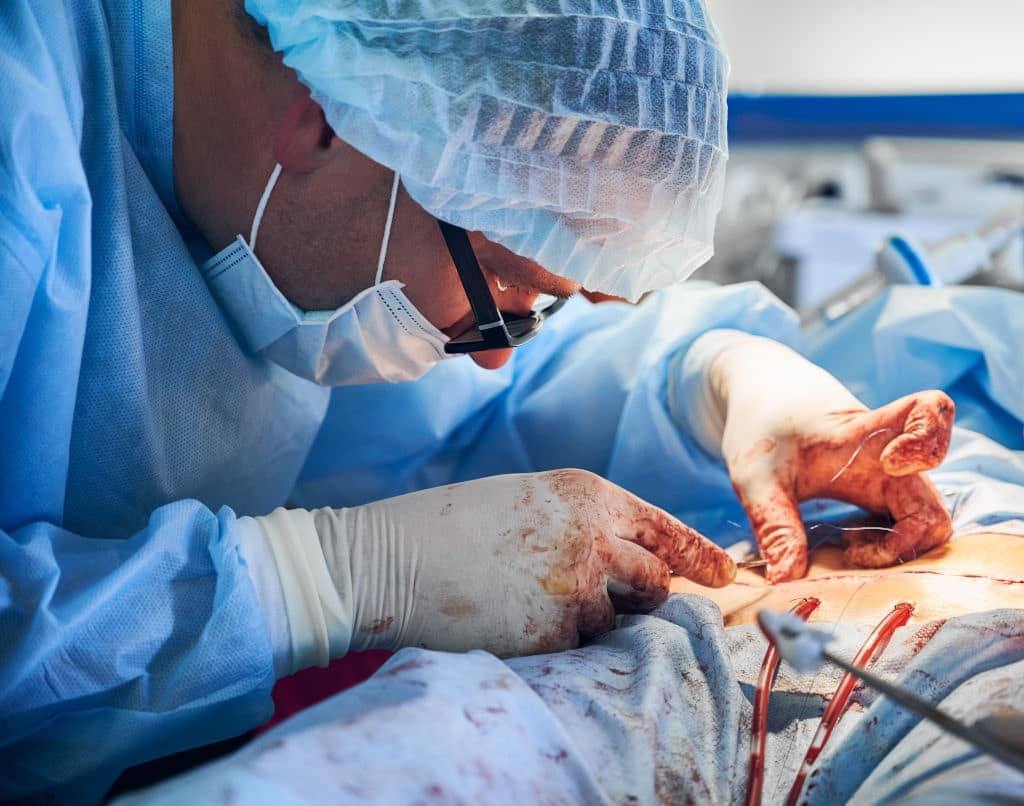Simply put, bowel perforation refers to holes in the small intestine or colon’s wall. The small intestine is a long, tube-shaped organ in the abdomen. It transports food from the stomach that hasn’t been fully digested and transfers it to the big intestine. The big intestine’s colon is its most extended segment.
The hole in the intestine can let food, digestive juices, bacteria, or waste (poop or stool) leak out. This may result in a pus buildup called an abscess. An infection may result from the intestine’s contents leaking into the peritoneal cavity, known as peritonitis. The infection may cause a broad blood infection referred to as septic shock if it gets into the blood.
Bowel perforations are serious, sometimes fatal conditions that necessitate immediate treatment due to their high morbidity and death rates. The overall death rate of bowel perforation is 30%. Despite surgical and medicinal therapy advancements, the mortality rate for those with diffuse peritonitis is up to 70%.
Whatever the cause of bowel perforation, you may be able to prove causation using medical animation if another person’s action or negligence caused the injury.

Proving The Cause of Bowel Perforation Using Medical Animation
Bowel perforation can be caused by means such as a tumor, radiation therapy, and non-cancerous diseases. It may also be caused by the action or negligence of another person. In cases like this, you may use medical animation to portray the cause of the condition.
Here are some of the causes of bowel perforation upon which you can institute legal action:
- Surgical injury
One known risk of surgery such as colonoscopy, hysterectomy, gallbladder surgery, gastric bypass surgery, EGD (esophagogastroduodenoscopy), and laparoscopic procedures is bowel perforation. However, before the patient sustains significant harm, it must be swiftly identified and surgically treated.
For instance, the surgeon in the case of Willis v. Bender perforated the plaintiff’s bowel while performing a laparoscopic cholecystectomy.
Whether the intestinal perforation resulted from a natural occurrence or was caused by surgery, it must be immediately identified and treated by medical professionals.
A radiology investigation, such as an X-ray or CT scan, is required to confirm the diagnosis, which is made by clinical examinations and tests.
Frequently, the surgeon can quickly fix a bowel injury discovered during the treatment. The procedure used to close an intestinal perforation is surgery.
The patient’s prognosis is typically determined by the length of time the perforation was left open and the severity of the infection.
As a result, there is a frequent cause for malpractice claims against the surgeon, nursing staff, and hospital when a patient is sent home or remains ill in the hospital with a perforated bowel.
For instance, in the case of Garrett v. University Associates in Obstetrics & Gynecology. Here, the plaintiff suffered bowel perforation during a bilateral tubal ligation, which was not discovered until after the surgery. The plaintiff went home in severe pain and returned to the emergency room. By the time the injury was diagnosed, an infection had set in, causing severe consequential damage.
When a medical doctor fails to recognize a bowel perforation during surgery and ignores symptoms after the procedure, you can use medical animation to show the time of the cut and the negligence in tending to the situation. You can as well show the harm that has been caused due to the overlooking of the symptoms.

- Wrongful Diagnosis
A misdiagnosis of certain conditions, such as bowel obstruction, can lead to bowel perforation or even more adverse sickness.
A case in point is Perry v. Alessi, where the plaintiff suffered from bowel obstruction but was wrongfully diagnosed. She later suffered bowel perforation, which was discovered during an emergency abdominal surgery on her when the pain was unbearable.
As a standard of practice, if a bowel perforation is suspected, your doctor will likely order X-rays to examine your abdominal cavity for air or fluid. A CT scan will also be required to determine the exact site of the perforation.
They may also take lab tests to look for infections, check your hemoglobin level to see whether you’ve lost a lot of blood, check your electrolytes, and examine your kidney and liver function.
The omission of specific steps can cause a lot of pain and suffering for a patient, and when standard care is left out, medical malpractice comes into play.
With medical animation, it would be possible to prove that bowel perforation was caused or aggravated due to misdiagnosis by medical personnel.
- Accidents
Even though it may seem farfetched, bowel perforation can be caused by road traffic accidents, construction accidents, workplace accidents, and many more catastrophic incidents.
When accidents are gory, it is clear that much harm could be caused, leading to internal injuries that human eyes may not easily detect.
When an accident causes bowel perforation, it is essential to identify the exact and proximate cause of the accident.
Medical animation can be used to prove that the accident led to the injury. This insightful portrayal can be done by animating from the point of the accident to the way the incident immediately caused perforation of the bowel.
Conclusion
Medical animation is very valuable in most cases, and bowel perforation is no exception. We understand this at Fox-AE. That is why we have a wall of success stories. They show how we take medical cases and turn them into demonstrative exhibits that pass across the right messages and capture the attention of the jury.
We don’t work in a vacuum. We ensure we work with expert witnesses on our animations. This is to ensure it portrays their opinions without leaving out any detail.





